When thinking of Greek food, cookies may be the last thing that comes to mind. After all, there are so many delectable dishes to get to know, from pastitsio to moussaka to the ubiquitous souvlaki, that cookies fall through the cracks.
However, that is a shame! Traditional Greek cookies, or koulourakia, are a staple of every important Greek holiday and celebration. They have their own fascinating history, and many recipes trace their roots all the way to Ancient Greece.
Traditional Greek cookies may not be very famous on the international culinary scene, but if you want to be a true connoisseur, you absolutely need to taste them and their delicious variety and versatility. And what better way to get to know them than to read up on their lush heritage, and then take a bite as you have your coffee, like so many Greeks love to do?
If that sounds good, join us on a brief tour of the history and cookie culture in Greece and get to know 10 of the most irresistible traditional Greek cookies!
The fascinating history of the Greek cookie
The Greek word koulourakia (κουλουράκια) means small koulouri. Koulouri (κουλούρι) is a slightly modern version of the Ancient Greek word for, you guessed it, cookie! In Minoan times, they were made in the shape of a snake to ward off diseases, a shape you still get to see today in certain types of Greek cookies.
These ancient cookies are rusks made with barley, perfect for carrying easily on trips or into the fields as they wouldn’t spoil. This barley rusk is still quite popular with Greeks today and is the forefather of all Greek cookies. Later on, still in ancient times, another, sweet cookie made an appearance made of animal fat, milk, honey, and herbs. These cookies were called plakountes and were so popular that ancient Persian kings would hire Greek cooks especially to make them!
Various combinations of the koulouri and the plakountes gave rise to all the several different Greek cookies, especially from the 15th century, when sugar first made it to Greece!
These sweet cookies made with several, often expensive, ingredients were customarily made for joyous occasions or celebrations in ancient and medieval Greece. Even today, certain cookies we’re about to see below are closely associated with specific holidays like Christmas or Easter and make any Greek person grin in happiness – that’s also thanks to how tasty they are!
So, without any more ado, here are some of the tastiest traditional Greek cookies, in no particular order. Each has a dedicated fan club in Greece. You have to taste them all to see which one you want to join!
1. Melomakarona (Christmas Honey Cookies)

Melomakarona cookies hail from Byzantine times and were originally made for funeral wakes. However, sometime during medieval times, they got dunked in honey and ever since have been festive, closely associated with Christmas.
They are made with a base of olive oil and sugar, orange juice, clove, and cinnamon. The secret to truly authentic melomakarona, though, lies in the syrup. It is a thick syrup made with honey and water, and it should completely saturate the cookies so that when you bite in, you get crunchy on the outside and syrupy goodness on the inside.
They are topped with ground nuts. Greeks like to warn people that you can’t only have one once you begin!
2. Kourabiedes (Christmas Almond & Butter Cookies)
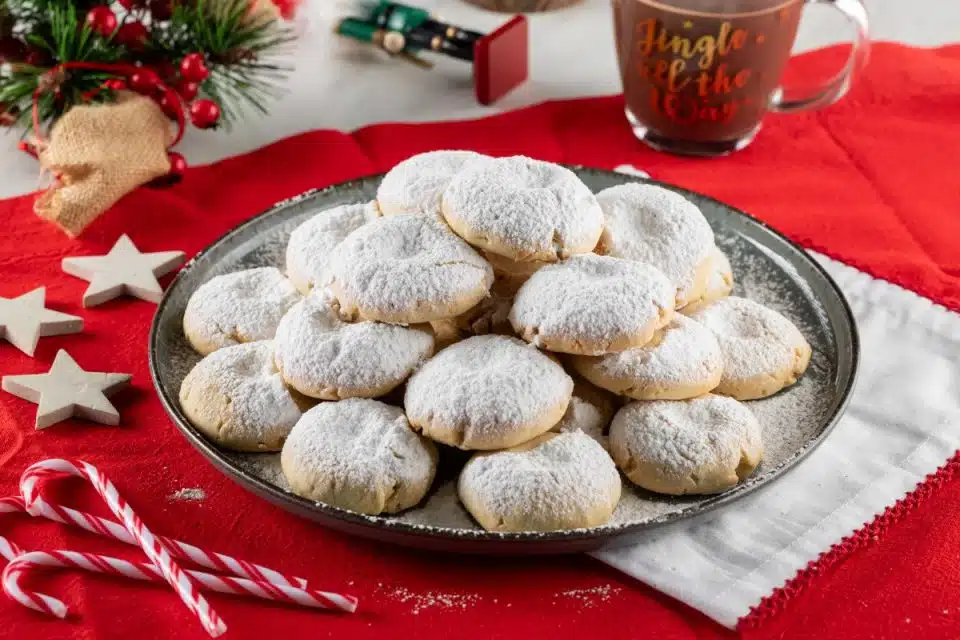
Kourambiedes are, together with melomakarona, the symbol of a Greek Christmas. They are considered the luxurious, upper class addition to Christmas cookies as they require a lot of butter and almonds.
Both ingredients were always expensive and status symbols, to the point that a rich kid who is soft and needs to be treated carefully is teasingly called a kourambies.
These cookies are round like snowballs, kneaded with butter and almonds and powdered sugar, which then is copiously sprinkled on top to completely cover and encase the cookie like snow. You have to eat it carefully because you’ll sprinkle powdered sugar everywhere. And if made correctly, it’ll crumble in your mouth delectably.
3. Chocolate Kourabiedes
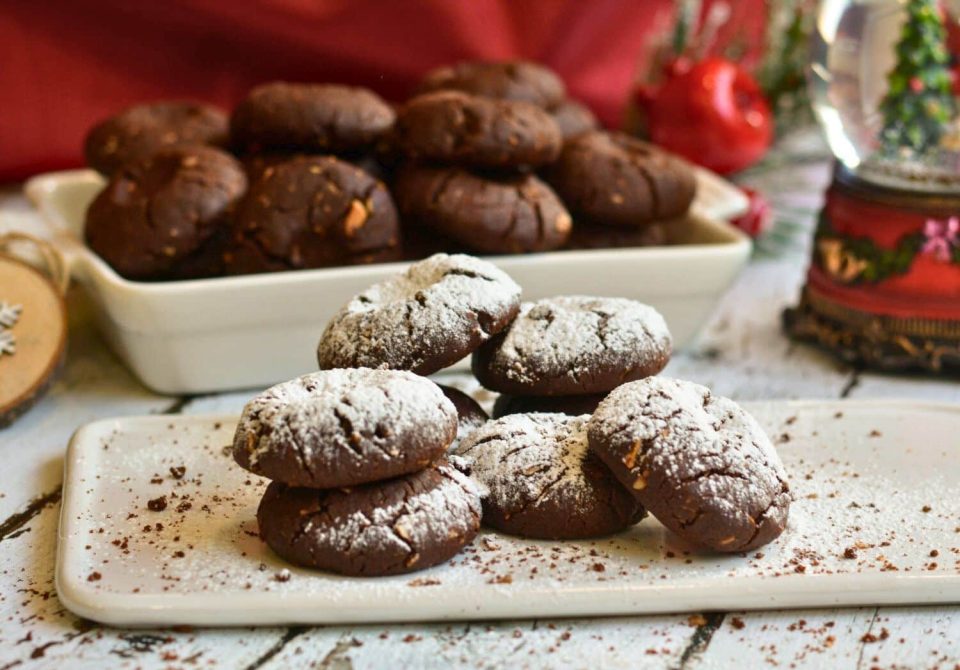
With the addition of cocoa powder, Chef Giorgos Tsoulis provides a twist on the traditional kourabiedes recipe, but dare we say it’s even more delicious. Enjoy!
4. Smyrnaika Koulourakia
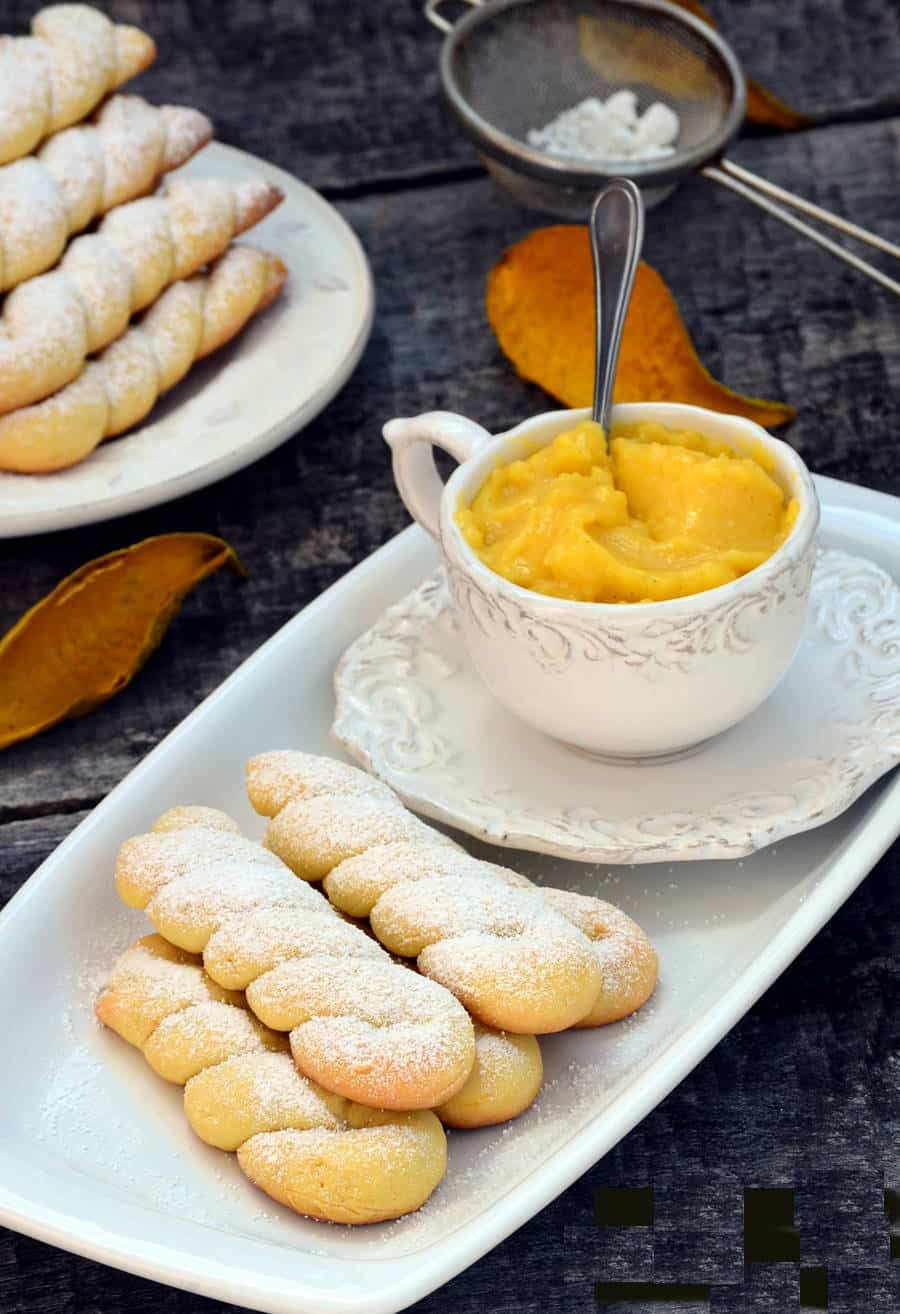
These are cookies which, as their name implies, have their origin in Smyrna, in Asia Minor. The recipe was created around the turn of the century, when Smyrna had a huge Greek population.
After the destruction of Smyrna in 1922, the Greeks that fled to Greece proper brought this recipe with them, and it became popular all over.
Smyrnaika koulourakia are made with butter, eggs, sugar, some mastic for fragrance, and vanilla. They are firm but crunchy, with a rich taste that goes great with milk or coffee. They are made around the year in Greece, but they are especially popular during and associated with Easter Sunday.
5. Paximadia (Sweet Rusks)

Paximadia are cookies directly linked to the ancient Greek versions we talked about! They are especially popular in Crete, where they’re called greeting cookies, because that’s the first thing they like to treat you with!
They are made with olive oil and orange juice as the base, and various fragrances or complementary ingredients, such as toasted almonds. They resemble biscotti and are incredibly rich in taste. And what’s often surprising is that they are vegan!
6. Ergolavoi (or Amygdalota from Central Greece)

Ergolavoi are chewy, soft cookies made with almonds (hence their other name, amygdalota) and almond paste, kneaded together with powdered sugar and egg whites to create their unique texture and consistency. As for their name, it comes from their fascinating 19th century story as the love cookie!
The story goes that in 19th century Athens, a group of young men were hanging around on the street serenading a young woman. When asked why they were there, they said they were contractors building a road (in Greek, a contractor is an ergolavos).
Ever since, these cookies have been given as a symbol of one’s love or during engagements and weddings, when they are called ergolavoi – love contractors, that is!
7. Amygdalota from the Islands

The name means made with almond, and it can be deceptive, as there are more than one type of Greek cookie with the name.
The ones from the islands, particularly the Cyclades, are made with finely ground almonds and rose or flower water and powdered sugar. They are very fragrant, usually shaped as a pear or a crescent and require no baking. They are also vegan!
8. Isli (Northern Greek Christmas Cookies)

Isli are triangular cookies with a ridged surface that are traditionally served during Christmas or at weddings in northern Greece, particularly Macedonia and Thrace. Originally, they came from Asia Minor.
They are also called vegan melomakarona, because they manage to be just as delicious as melomakarona, but without honey!
They are basically cookies stuffed with nuts and spices, wrapped in an airy, light dough that is firm enough to keep everything in, but crumbles deliciously in your mouth. The cookies are also doused in syrup, which they also absorb until saturation, just like the melomakarona. The syrup, though, is made with sugar and water mixed with rose water.
9. Moustokouloura

Moustokouloura are, as their name implies even in English, cookies made of must: the juice of freshly crushed grapes before it is put in a barrel to become wine! They are some of the most unique cookies you will get to taste. They have a characteristic light brown color and are usually circle shaped.
The taste of moustokouloura is unique, a balanced, delicious combination of sweet, fruity, slightly spicy, and definitely rich. They’re usually served as a coffee treat.
10. Lychnarakia (Easter Cookies from the Islands)

Their name means little lamps and their shape is unique, often resembling a 19th century oil and water lamp cup that Greeks light before icons in prayer. They are considered delicacies from the island of Tinos in the Cyclades or from Chania, Crete.
They are definitely Easter cookies, which are ceremoniously made on Good Thursday or Good Friday, during the Orthodox Easter Holy Week.
They are made with a dough of butter, milk, eggs, and vanilla. This dough is then filled with a sweet soft Greek cheese, called Mitsithra, mixed with sugar and egg, like a flat tartelette in Crete, or a taller one in Tinos.
11. Ouzo Cookies from Corinth
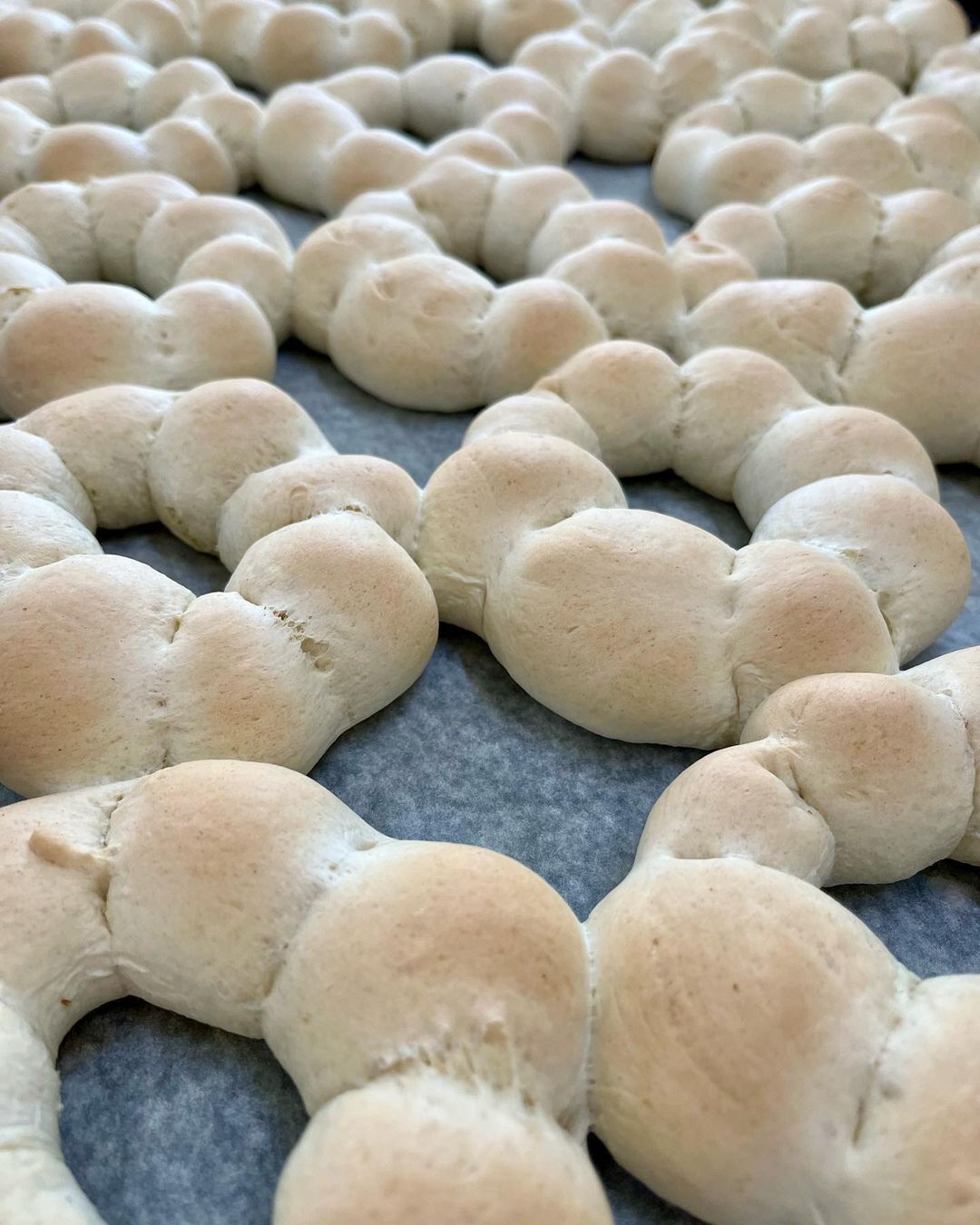
No list would be complete without the traditional ouzo cookies from Corinth, also called Corinthiaka! They are also called drunk cookies, for obvious reasons.
They are made with olive oil, ouzo, sugar, and mastic. They are shaped into wreath-like designs and are very light colored, almost white, and topped with sesame. They have a very distinct taste that is not heavy with ouzo, but is a rather fragrant, sugary flavor that will pleasantly surprise you as you enjoy your coffee.
These cookies are just a small sample from the vast range of traditional Greek cookies waiting for you to explore! Each region of Greece has at least a couple for you to enjoy, in an endless, delightful, delicious journey of the heritage of Greece and the traditions that warm the heart. We hope that you can embark on yours with these first ten.
Related: 25 Popular Greek Desserts
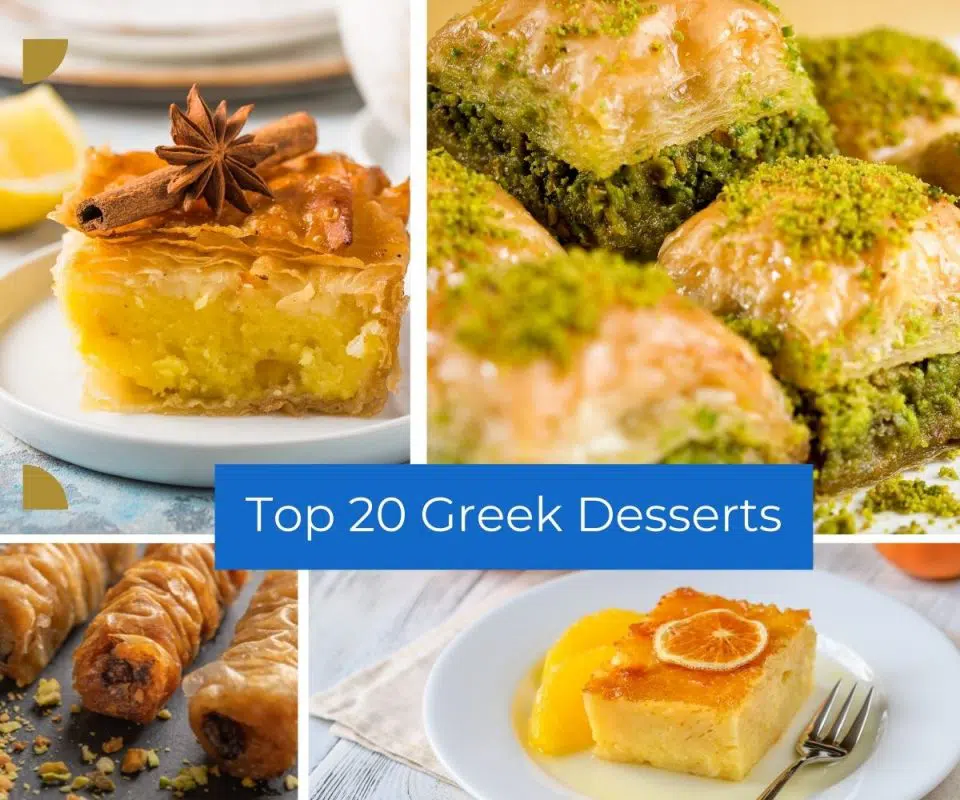
Related: Traditional Greek Christmas Foods

The post 11 Traditional Greek Cookies You Won’t Be Able to Resist! appeared first on Chef's Pencil.
from Chef's Pencil https://ift.tt/pwUQgAl
via https://chefsspenncil.blogspot.com

No comments:
Post a Comment